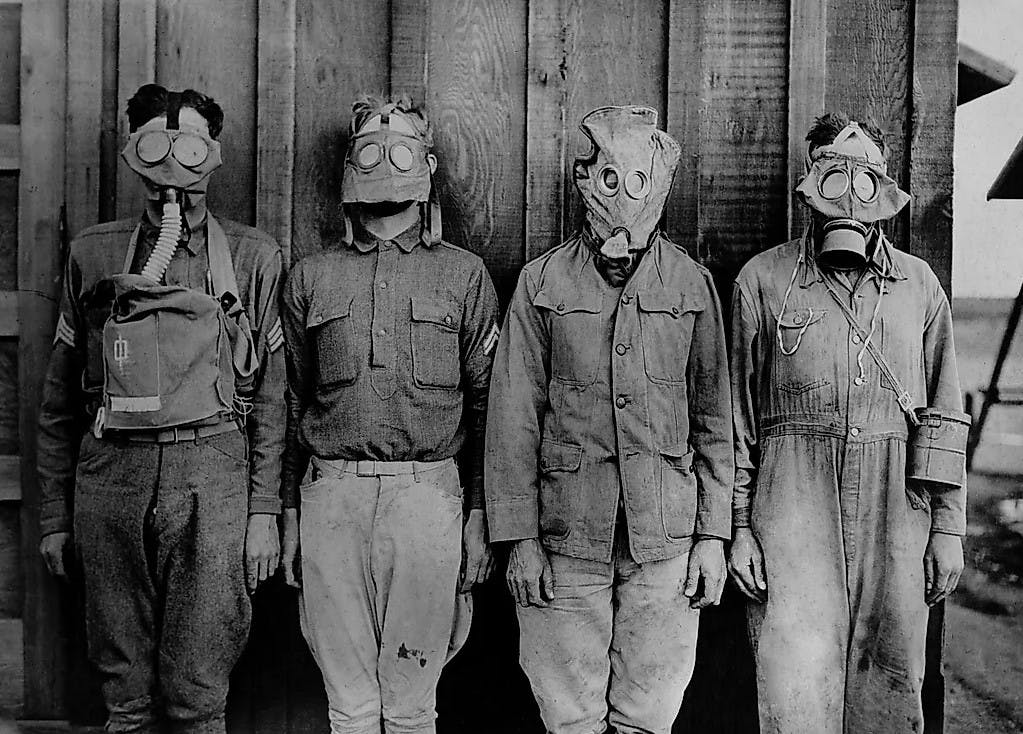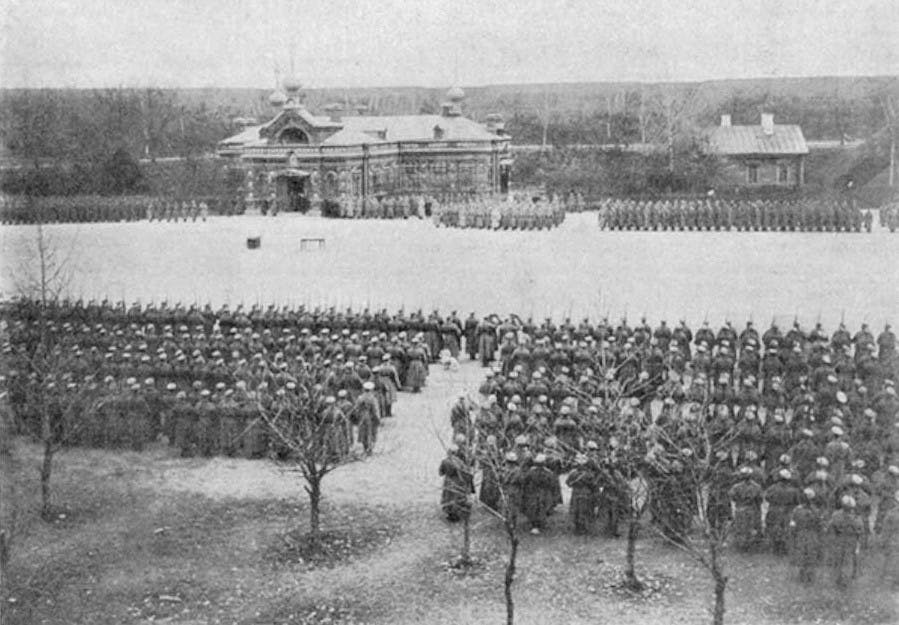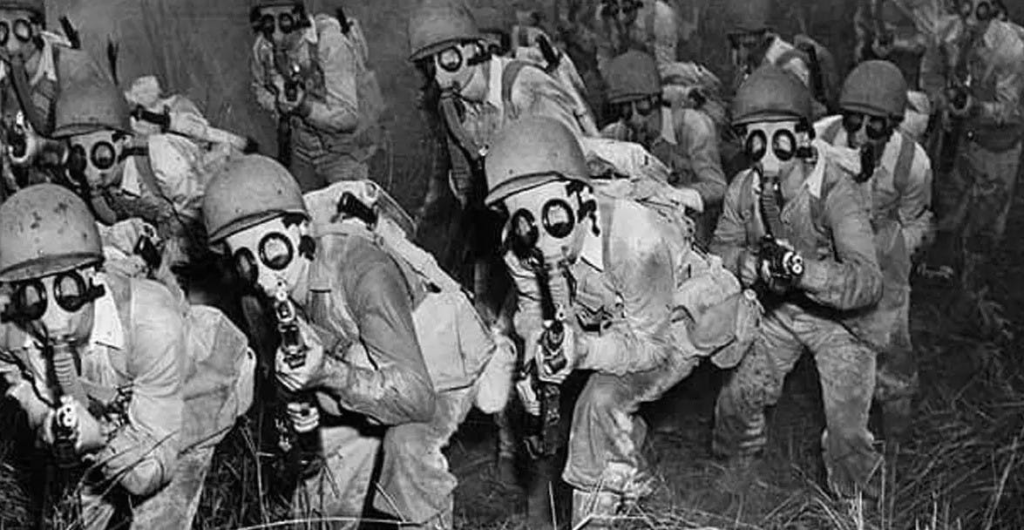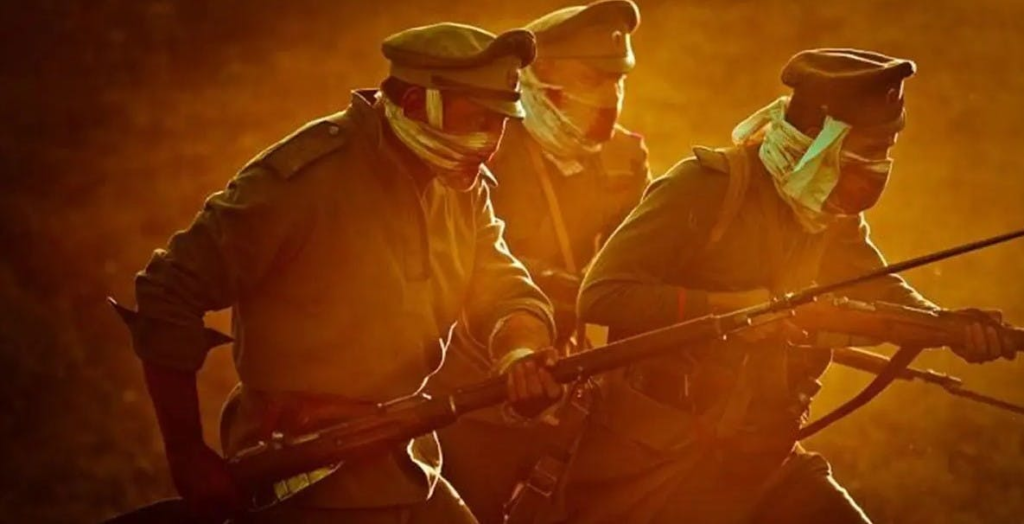THE HORRIFIC CHEMICAL WARFARE ATTACK THAT FAILED TO BREAK RUSSIA’S WILL
The date was August 6th, 1915. World War I raged across Europe as the German army marched on Russia’s Osowiec Fortress, determined to finally capture the stronghold after two failed attempts. Little did the Russian defenders know, the Germans had brought a terrifying new weapon – poison gas. What happened next passed into legend as one of the most nightmarish battles of the Great War.
THE BACKDROP
Constructed in the late 19th century, Osowiec Fortress guarded a vital river crossing and railway line near Russia’s border with East Prussia. Its thick defensive walls and outer trenches stymied German offenses in September 1914 and February 1915.
But Field Marshal Paul von Hindenburg was undeterred. That summer, he returned with an overwhelming force – 30 heavy siege guns, 14 infantry battalions, a battalion of combat engineers, and 30 batteries of artillery, totaling around 7,000 men.
Inside the battered fortress, 500 Russian infantrymen and 400 militia dug in, hoping their defenses could repel yet another attack. They knew nothing of the Germans’ secret weapon – chlorine and bromine gas.

THE CREEPING DEATH
In the early morning hours of August 6th, the Germans began bombarding Osowiec. After the initial artillery barrage, they released the gas from balloon canisters.
“A dark green smog of chlorine and bromine mixture moved towards Russian positions,” one witness recalled. The wave of toxic gas spread nearly 5 miles wide and 12 miles deep.
Chlorine gas turned the grass black and leaves yellow as it crept toward the Russians. Once inhaled, it reacted with the moisture in their lungs to create hydrochloric acid, burning and dissolving the tissue.
The bromine gas also attacked their eyes, skin, and mucous membranes. Soldiers choked on blood and mucus as the gases ate them from the inside out.
Frantically, the Russians soaked rags and shirts in water and urine to cover their faces. But for many positioned near the front lines, it was too late. Their horrific, agonizing deaths had already begun.

THE WALKING DEAD
Expecting quick victory, 7,000 German troops waited for the gas to clear before advancing. But to their shock, Russian soldiers began emerging from the deadly haze – crawling, stumbling, but still alive.
Faces hideously scarred and blinded, the Russians came on, coughing up their melted lungs. With bayonets fixed, these half-dead men thirsted for revenge. Even gunshots couldn’t halt their determination to fight.
“The walking dead-like Russian soldiers terrified the Germans, who fled in panic and confusion.”
“Like dead men returning to life, the Russian survivors came on, heavily breathing, gasping for air,” one witness recounted. The Germans were horror-struck by the gruesome sight. Soldiers who should have died in agony were somehow still advancing.
The walking dead-like Russian soldiers terrified the Germans, who fled in panic and confusion. The trenches became death traps as retreating troops trampled each other desperately trying to escape the nightmare before them.
By 11:00 am, the Russian counterattack had astonishingly repelled the Germans all the way back to their starting line. The “Attack of the Dead Men,” as it became known, was an unexpected victory snatched from the jaws of hellish defeat.

THE HORRORS OF CHEMICAL WARFARE
The Germans’ use of poison gas at Osowiec was not the first in World War I. In April 1915, they had released over 150 tons of chlorine gas against French lines at Ypres, horrifying the world.
Initially, chemical weapons like tear gas were seen as non-lethal alternatives to break trench warfare stalemates. But Haber and others pushed Germany toward industrial-scale inhumane weapons.
When Germany targeted the unprepared Eastern Front with massive gas attacks, the results were devastating. Over 500,000 Russian soldiers were affected, with an estimated 66,000 deaths.
“Soldiers choked on blood and mucus as the gases ate them from the inside out.”
Without protective equipment, Russians died excruciating deaths from the slightest gas exposure. Those not killed instantly suffered terribly – wracked with convulsions, burned inside and out.
Even with gas masks, terrified soldiers could only hope to endure the nightmare, never escape it. The Alarm Rings of “Gas attack” signaled a frantic race against time. For many, those warning seconds determined life or death.
Russia initially lacked the means to defend itself or to retaliate, despite pleas from generals. But Russian scientists eventually produced gas masks and their own chemical weapons. However, distribution issues left soldiers exposed until 1917. Each German gas attack inflicted thousands of casualties in the meantime.

THE LEGACY
Strategically, Osowiec Fortress soon fell. The Russians demolished its remnants to prevent German capture. But tactically, the shocking “Attack of the Dead Men” was a dramatic Russian success against overwhelming odds.
The battle left an indelible impression upon those who witnessed the horrifying realities of chemical warfare. Beyond the strategic objectives, the methods of industrialized warfare had unleashed new kinds of indiscriminate suffering.
The utter hellscape faced by the outmatched Russian defenders tested the very limits of human endurance. That it failed to completely break their will to fight back revealed the strength of the human spirit persevering against unspeakable evil.
From the ashes of the twisted, melted dead, the ones who should have perished instantly rose up half-alive. Coughing up their organs, blinded by their burnt flesh, they stumbled onward in defiance, chasing the nightmare back to the German lines.
The Attack of the Dead Men showed war’s full monstrous nature. But it also demonstrated the defiant resolve of ordinary men to keep fighting, staring back at the abyss. Rather than submit to a horrific demise, they grabbed hold of a courage beyond themselves.
Such willingness to continue against supremely lethal weapons and tactics foreshadowed the grueling industrialized warfare still to come. The Attack of the Dead Men was a harbinger, offering a glimpse into the unimaginable horrors of war that the 20th century would soon reveal.

 Additional Facts
Additional Facts
1 Million
During the week-long bombardment, German artillery fired over 1 million rounds from their light guns and another 250,000 shots from heavy artillery pieces.
8.5 Million
World War I casualties far exceeded previous wars, with approximately 8.5 million soldiers killed from battle wounds or disease. Artillery inflicted the most casualties, followed by small arms fire and lastly from poison gas.



